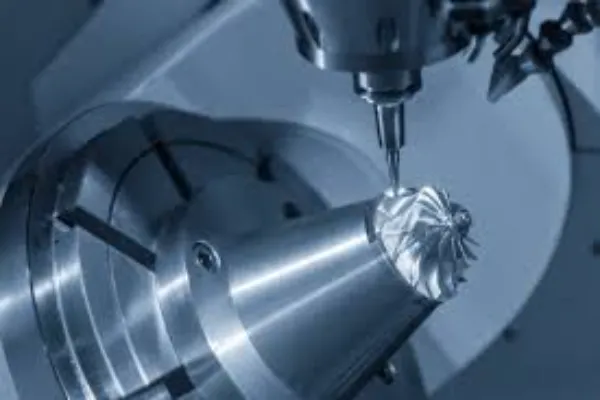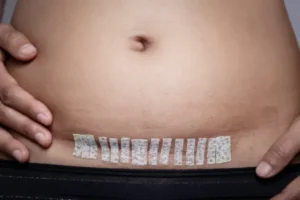Achieving Tight Tolerances on Complex Geometries with 5-Axis Machining Solutions

Modern part manufacturing in industries like aerospace and medical devices requires components with extremely intricate geometries. Other than achieving the tight tolerances with micron-level precision, transitioning between geometries like moving from a straight cut to an attached contour poses machining errors, precision challenges, and limited tool reach for standard CNC machining. Partnering with experienced providers like WayKen rapid manufacturing can help overcome these challenges through advanced equipment and process expertise.

5-axis machining offers movement beyond the X, Y, and Z linear movements. In this article, you’ll learn about the 5-axis machining solutions and how effectively 5-axis machining can minimize tool deflection, gouging, overcutting, and workholding errors.
Minimizing Setup Errors Through One-Clamping Multi-Surface Machining
Conventional machining can cut part surface from the plane where the tool can approach it. This means precision machining parts require reorienting for the tool to cut or produce a feature, which introduces precision errors, coordinate errors, and machine calibration problems.
In manufacturing, ‘one clamping’ refers to the process of completing all machining operations and cutting for a part in a single fixture without the need of rearranging, orienting, repositioning, or removing it from the setup.
One clamping is also called one-pass machining. It is important for precision because it reduces and, to a certain degree, eliminates in-process misalignments, and reduces dimensional inaccuracies and machining time.
Benefits of Single-Setup Machining
By eliminating the need for repositioning the part, single setup machining minimizes the errors that come with adjusting clamping, like datum shift and positional deviations.
- Higher Precision
Positional error in machining is when a part shifts from its origin, and the machining coordinates and feature locations shift. Positional error is introduced every time a part is reclamped in a CNC machine. One clamping ensures all machining operations are referenced from the same coordinates.
- Better Efficiency
One clamping reduces machining steps, resulting in shorter cycle times. There are minimal tool changes, a single setup, and no manual part rearrangement.
- Reducing Tooling Complexity
The most important benefit of one clamping is the DFM arrangement, which can design a single fixture arrangement to accommodate all operations from pocketing to drilling and engraving. This can reduce tool changes and tool complexity.
A 5-axis machining setup can mill, drill, and contour multiple surfaces while rotating, moving, and tilting the workpiece without the need for repositioning. For example, aerospace components like structural brackets require contouring on multiple faces, and 5-axis machining can achieve tolerances as close as +/- 0.005 mm, enhancing accuracy and reducing errors.
Probing Systems
Advanced 5-axis machining solutions also have in-built probing systems that measure the workpiece after every machining operation. In situ probing can maintain tolerances as tight as +/- 0.003 mm. Probing systems are essential to 5-axis machining because they can correct dimensions for thermal expansion and fixture variation to achieve tight tolerances.

Avoiding Tool Deflection on Thin-Walled or Long-Reach Features
| Complexity | Challenges | 5-axis Machining Solutions |
| Thin-Walled Feature | High feed rates cause high cutting forces that can cause wall deformation, chatter, leading to broader tolerance (up to 0.01 mm) | Tilt angle machining can overcome the effect of cutting forces by adjusting tool orientation to reduce radial forces. In most precision machining cases, it can achieve +/- 0.008 mm wall thickness tolerances |
| Long-reach Features | Long tools vibrate and can deflect when pocketing deep cavities, resulting in poor surface quality and imperfections. | Workpiece rotation and tilting allow shorter, more rigid tools and reduce deflection and vibrations. |
| Material Issues | Hard materials like aerospace-grade inconel and alloys increase deflection risks. | Trochoidal milling and adaptive feed control in 5-axis systems can maintain a uniform chip load for better surface quality. |
| Chatter | Tool marks or dimensional errors can arise from dynamic instability during machining. | In one clamping, real-time workpiece fixture adjustment can adjust tool angles and workpiece tilting, which can stabilise the tool cutting and achieve tighter tolerances. |
Maintaining Tolerance in Transitional Geometry Zones
Transitional geometry in CNC-machined parts is are features that intersect with one another, such as fillets intersecting with straight walls or blended surfaces in complex components. You can think of an example of a transitional geometry as a small fillet intersecting a straight wall in a medical device or implant. In these critical areas, there is a risk of dimensional errors and deviations due to sudden changes in surface profiles and features, which change the tool’s contact point and cutting forces.
For example, in 3-axis machining and machining centers, the fixed tool orientation often overcuts or undercuts, leading to deviations. Plus, any transition from a flat surface to a curved fillet can cause chatter and poor surface finish.
Traditional machining struggles to achieve tolerances when there is a transition from feature to feature because adapting to varying curves is difficult and requires specialized CAM processes.
Continuous Tool Axis Adjustment
5-axis machining solutions reduce the issues in machining transitional geometry by continuously adjusting the tool movement to follow any contours. During 5-axis machining, carbide end mills that have high helix angles are often used to improve chip evacuation in curved surfaces. Besides, tool coatings can further improve tooling performance by reducing friction and heat to maintain stable precision across machining operations.
For example, when machining a fillet intersecting a thin wall, the machine can tilt the cutting tool progressively from 0° to 30° to align the cutting edge of the tool to follow the curvature of the fillet for high precision and accuracy. Another way, tool adjustment and tilting lead to higher precision, is through consistent tool engagement, which reduces cutting force vibrations by maintaining a constant chip load.

Toolpath Strategies for Transitional Zones
While most of the cutting path is generated through CAM software, advanced strategies like 5-axis swarf cutting can better align the tool’s edge with the transitional surface, which reduces machining passes and smaller seam blends.
In addition, flank milling uses the tool’s side, which can machine straight-to-curved transitions, minimizing surface irregularities.
Conclusion
5-axis machining utilizes advanced tooling strategies and CAM processes to achieve tight tolerances in complex transition geometries and thin features. By utilizing various end mills, high helix angle cutting tools, and maintaining tool edge contact with the workpiece at all times, reduces heat and vibrations that decreases dimensional inaccuracies and, through this, ensures tight tolerances.
5-axis machining has become indispensable for precision machining capability, provides advanced tool optimization and feature flexibility in design, and reduces cycle times for large volume productions.




